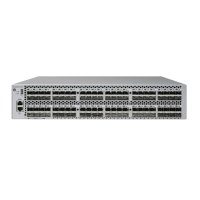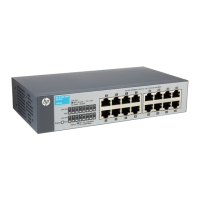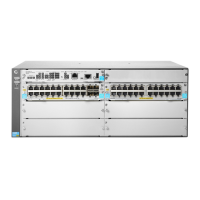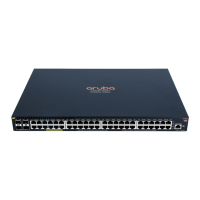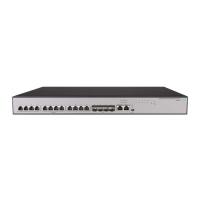140
Configuring super VLANs
Hosts in a VLAN typically use IP addresses in the same subnet. For Layer 3 interoperability with
other VLANs, you can create a VLAN interface for the VLAN and assign an IP address to it. This
requires a large number of IP addresses.
The super VLAN feature was introduced to save IP addresses. A super VLAN is associated with
multiple sub-VLANs. These sub-VLANs use the VLAN interface of the super VLAN (also known as a
super VLAN interface) as the gateway for Layer 3 communication.
You can create a VLAN interface for a super VLAN and assign an IP address to it. However, you
cannot create a VLAN interface for a sub-VLAN. You can assign a physical port to a sub-VLAN, but
you cannot assign a physical port to a super VLAN. Sub-VLANs are isolated at Layer 2.
You can enable Layer 3 communication between sub-VLANs by performing the following tasks:
1. Create a super VLAN and the super VLAN interface.
2. Enable local proxy ARP or ND on the super VLAN interface as follows:
{ In an IPv4 network, enable local proxy ARP on the super VLAN interface. The super VLAN
can then process ARP requests and replies sent from the sub-VLANs.
{ In an IPv6 network, enable local proxy ND on the super VLAN interface. The super VLAN
can forward and process the NS and NA messages sent from the sub-VLANs.
Super VLAN configuration task list
Tasks at a glance
(Required.) Creating a sub-VLAN
(Required.) Configuring a super VLAN
(Required.) Configuring a super VLAN interface
Creating a sub-VLAN
Step Command Remarks
1. Enter system view.
system-view
N/A
2. Create a sub-VLAN.
vlan
vlan-id
By default, only the system default VLAN (VLAN 1)
exists.
Configuring a super VLAN
When you configure a super VLAN, follow these restrictions and guidelines:
• Do not configure a VLAN as both a super VLAN and a guest VLAN, Auth-Fail VLAN, or critical
VLAN for a port, and vice versa. For more information about guest VLANs, Auth-Fail VLANs,
and critical VLANs, see Security Configuration Guide.
• Do not configure a VLAN as both a super VLAN and a MAC-based VLAN.
• Do not configure a VLAN as both a super VLAN and a sub-VLAN.
• You can configure Layer 2 multicast for super VLANs. However, the configuration does not take
effect because super VLANs do not have physical ports.

